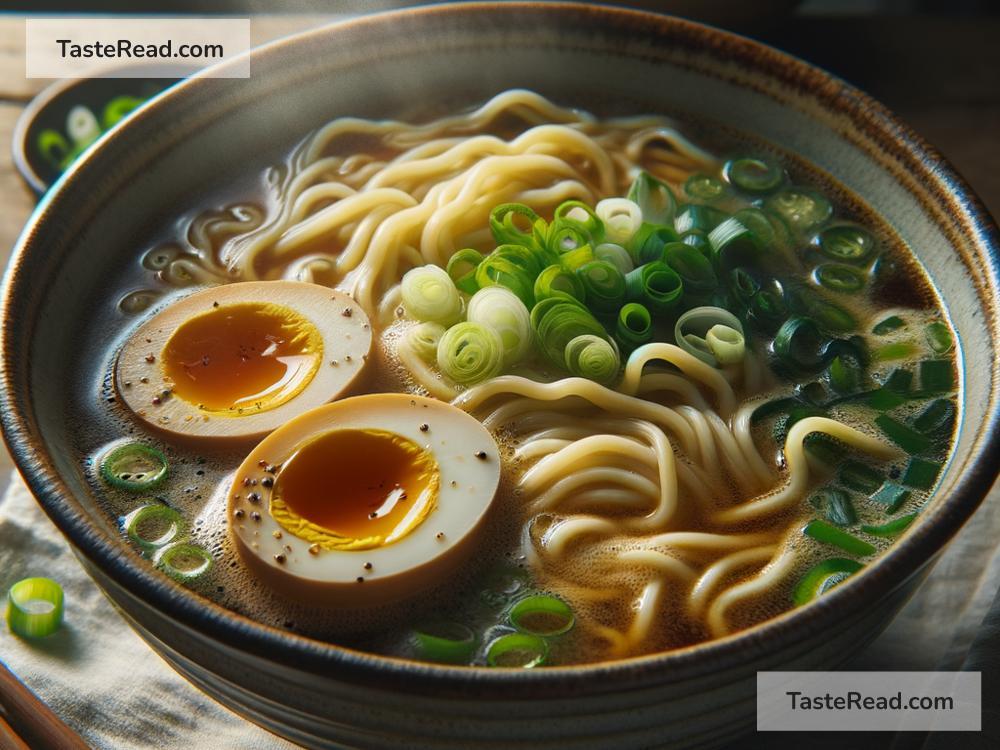From Kitchen Rookie to Expert: My Experience Cooking Japanese Ramen
Let me take you on a journey, from my early days fumbling with pans and pots, hardly mustering up an edible meal, to my current status where I can proudly say, I’ve mastered the art of cooking a dish dear to my heart and taste buds — Japanese Ramen. It’s a story of perseverance, a sprinkle of disaster, and a whole lot of learning along the way.
When I first decided to dive into the culinary world of Japanese cuisine, particularly ramen, I was a complete novice. My cooking skills were basic at best, and my knowledge of Japanese flavors was limited to what I’d tasted in restaurants. But, there was something about the depth of flavor in a bowl of ramen that intrigued me. It wasn’t just a dish; it was a craft — a delicious blend of rich broth, tender noodles, and perfectly paired toppings.
The first challenge was the broth. I learned that the soul of ramen lies in its broth. Chicken, pork, or even seafood can be the base, but what matters is the hours it simmers, melding flavors into a complex, savory liquid gold. My first attempt was, to put it mildly, a disaster. The flavors were off balance, it was too salty, and lacked the nuanced depth I so loved in restaurant versions. But I didn’t give up. I read up, watched countless videos, and learned about the intricacies of making dashi (a simple but flavorful broth that forms the base of many Japanese dishes), and the importance of umami — that savory fifth taste that makes dishes like ramen stand out.
Next came the noodles. If the broth was the soul, then surely, noodles were the heart of ramen. Achieving the perfect, chewy texture was another mountain to climb. My early attempts produced noodles that were too soft or too firm. Understanding the role of kansui (alkaline water) was a turning point for me. It’s what gives ramen noodles their distinct texture and slight yellow color. Trial and error, mixed with patience, finally paid off. I found the right balance and could consistently make noodles that had the ideal bite.
Toppings, on the other hand, offered a playground for creativity. Soft-boiled eggs steeped in soy sauce and mirin (a sweet cooking rice wine), tender slices of chashu (braised pork), crisp bamboo shoots, fresh green onions, and a hearty piece of nori (seaweed) became regulars in my kitchen. Each topping added its own unique flavor and texture, contributing to the symphony that is a bowl of ramen.
The turning point of my journey from a kitchen rookie to a confident cook came when I started to understand how each component of ramen complemented the others. The broth’s richness balanced by the noodles’ chew; the savory meat and the soft, seasoned egg; the freshness of the vegetables complementing the deep, complex flavors of the broth. It was about harmony, a delicate balance that I strove to achieve in every bowl I made.
With relentless practice and an unwavering interest in Japanese cuisine, I found myself evolving. Cooking ramen no longer intimidated me; instead, it became a source of joy and a way to express creativity. I experimented with different broths, played with various toppings, and even invited friends over for ramen nights, proudly serving bowls that were met with smiles and requests for seconds.
Looking back, I realize that my journey was not just about cooking but about persistence, about not being afraid to fail and learning from each mishap. It taught me that cooking is an art, a form of expression that feeds not just the body but also the soul.
To those who are just starting their culinary journeys, whether it’s with ramen or any other dish, I say this: Embrace the challenges and the mistakes. Each burnt pan, each less-than-perfect meal, brings you one step closer to the cook you aspire to be. Dive into the flavors, experiment with ingredients, and remember that every master was once a beginner.
From my kitchen to yours, happy cooking! And here’s to turning those cooking dreams into delicious realities, one bowl of ramen at a time.


